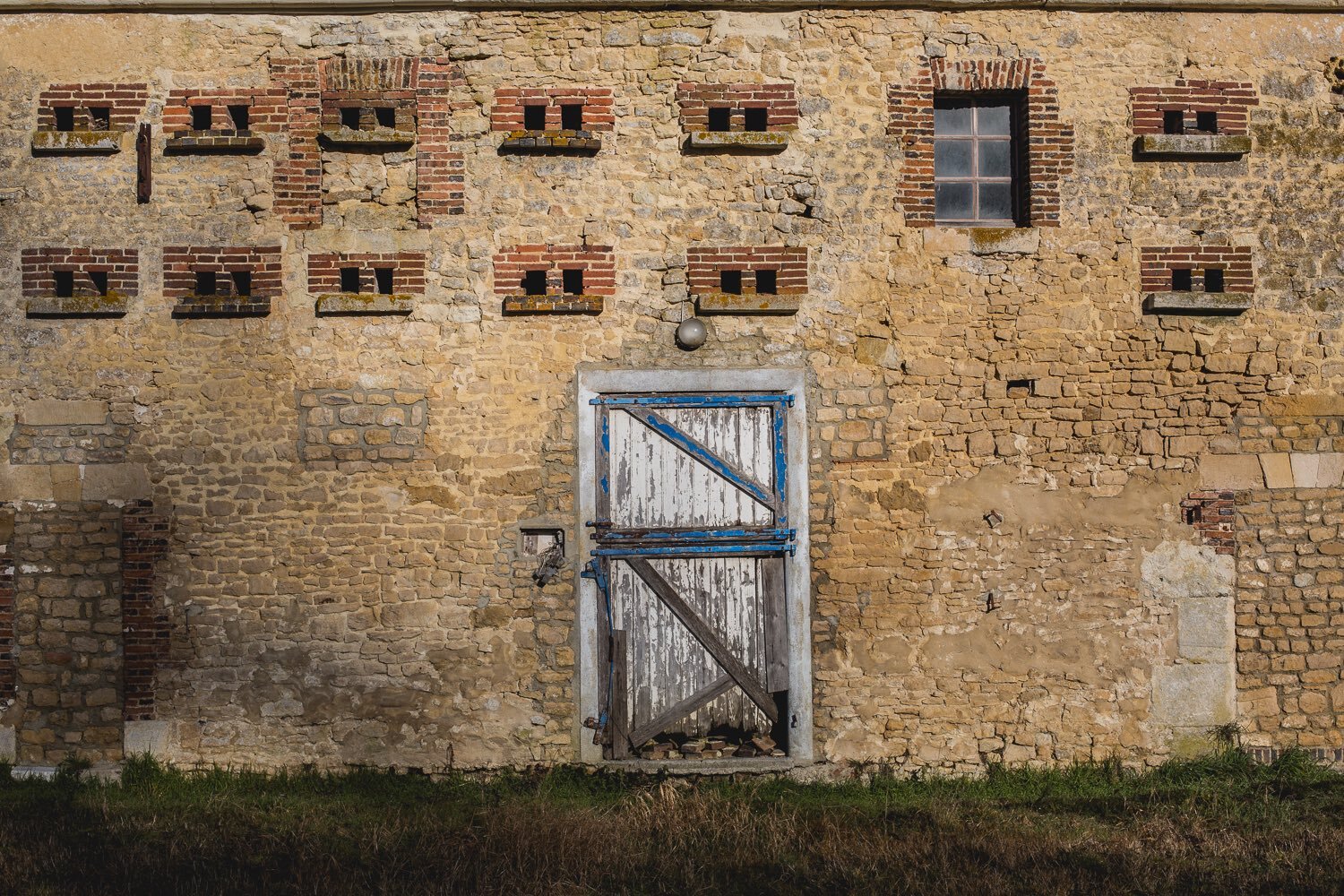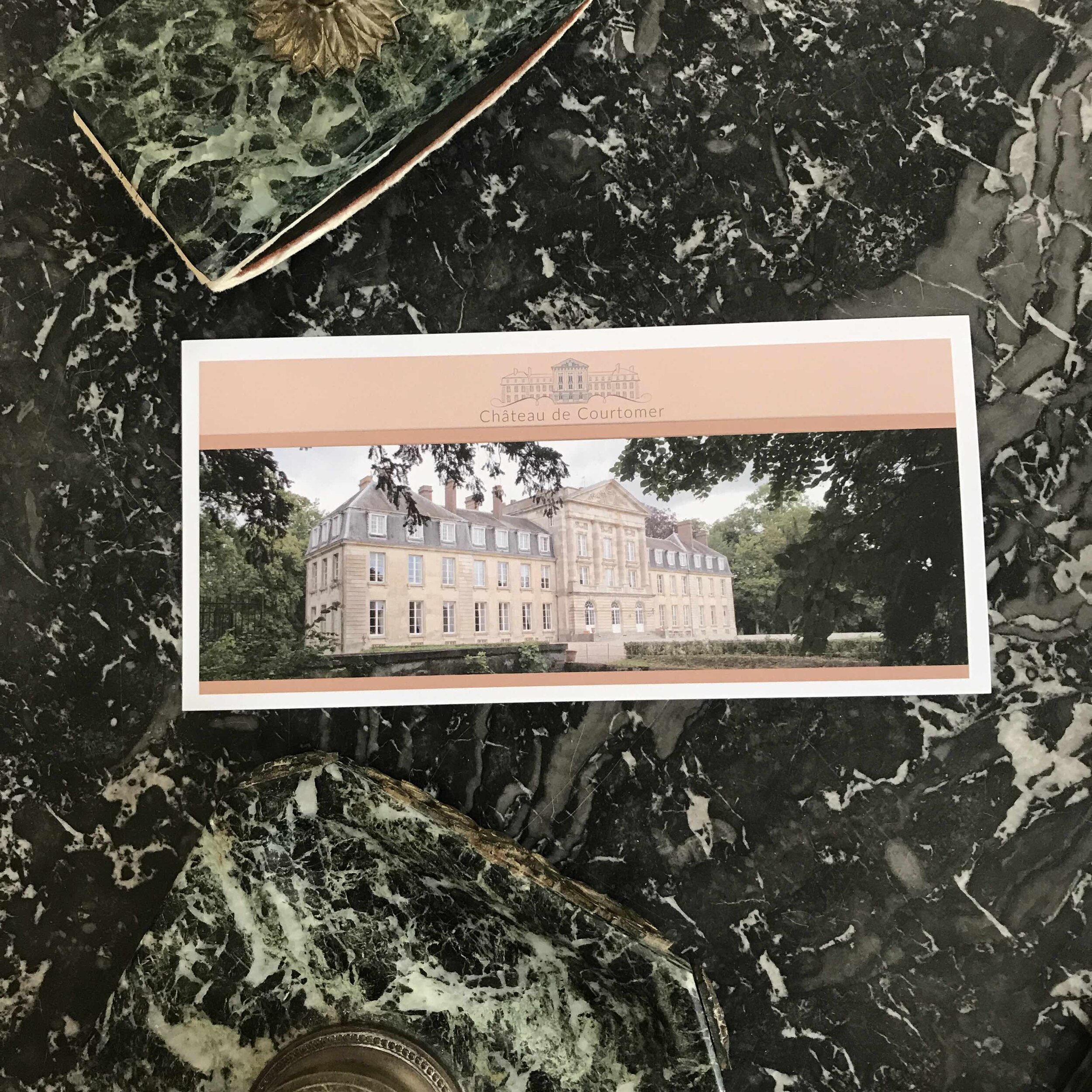The History Of Chateau de Courtomer
Photo Courtesy of Gilles De Moor, former resident.
The History of the Chateau de Courtomer…
“By the 1600s, the medieval chateau was beginning to crumble
…Times had changed.”
“Built in 1787-1789 by the last marquis of Courtomer and Parisian architect, this abode replaced a feudal Chateau built in the middle-ages and demolished in the 18th century.”
Chateau de Courtomer, seen above in an engraving of 1861, is set in a gentle valley amid the green hills of the Orne, a department of Normandy in western France. This was the seat of a powerful family of Norman noblemen from the 11th century until the beginning of the 20th century – almost a thousand years of stability amid the centuries of creative destruction that shaped modern France, through social and economic upheaval and transformation, revolution and war.
The earliest remains of human occupation found in the area date back about 100 000 years. Celtic tribes settled, the Romans conquered, the barbarian Franks swept through…and they all left their mark in this fertile, outwardly peaceful area. Before it was Normandy, the region was part of the vast Roman province of Gallia Lugdunensis. When Rome fell and the Franks conquered Gaul, Normandy became part of the Kingdom of the West Franks. When the Merovingian kings, descendants of King Clovis of the Franks, gave way to the new dynasty of Charlemagne, it merged into the new Carolingian kingdom of France.
Viking Raiders
The first Chateau de Courtomer was a fortress, a stronghold in a countryside that had suffered from civil war between rival factions of Frankish noblemen and 200 years of Viking raids. These fierce men from the North spent the summers sailing back and forth between the English and French coasts, looting abbeys and pillaging rich farms. But when they had rowed up the Seine and besieged Paris once too often, the French king Charles the Simple made a deal. In return for peace, he gave them land. That was in 911. The Norsemen soon settled in France where they intermarried with local families, converted to Christianity and founded new aristocratic dynasties. They gave their name to Normandy.
Coat of arms of the Saint Simon de Courtomer family
By the year 1050, the Norman seigneurs of Courtomer had made a name for themselves in local lore. They had allied themselves closely with their powerful neighbors, the dukes of Alençon. They had fought in the crusades. And one of them married a daughter of the Count of Tancarville -- from whom my husband William Bonner and our children are descended! (Today, the only reminder of the Tancarville name in France is a ruined fortress and a bridge over the Seine River. The family followed William the Conqueror to England in 1066. Their descendants today are the Tankervilles in England and the United States.)
Of course, placating the Normans only worked for a short time. The duchy of Normandy became a center of conflict as soon as its duke conquered England in 1066. At one time, the new English kings actually held more territory in France than their French rivals. The 100 Years War spanned the mid-14th and 15th centuries, as the kings of France and the Norman kings of England fought for control. Not far from Courtomer, in Moulins le Marche, you can still see traces of the immense “Fossés le Roi” an earthwork wall and ditch separating the duchy of Normandy and the comté de Perche, whose counts were loyal to the king of France.
War or Religion
“The Barons of Courtomer…
…like many independent-minded noblemen, converted to Protestantism. In the temple on their lands, the family was baptized, married, and buried.”
The Chateau de Courtomer would remain an important defensive center until the end of the 100 Years War and the beginning of a period of peace and growth. That is, until the Protestant Reform ushered in another period of violent conflict. Protestantism was widespread in Normandy by the 1530s, protected by the king’s sister, Marguerite of Angouleme. This fascinating woman of letters -- “heart of a man in a woman’s body, with the face of an angel” as a contemporary put it, held court in her husband’s duchy of Alençon. The barons of Courtomer, like many independent-minded noblemen, converted to Protestantism. In the temple on their lands, the family was baptized, married, and buried.
19th-century illustration of the Ancient Protestant Temple of Courtomer
The Religious Wars ended with the possibly apocryphal remark by Henri of Navarre – Marguerite’s grandson –
“Paris is worth a mass.”
The Protestant king converted to Roman Catholicism, ending the war and instituting a long period of civil peace and enforced religious tolerance. The nobles who had supported the new Henri IV found their fortunes greatly enhanced. The baron of Courtomer, Artus de Saint-Simon, was granted a marquisate. The title was recognition not only of important military service, but also of large territorial holdings. When you look out from the windows of Courtomer, all the land you see today was once Courtomer land.
By the 1600s, the medieval chateau was beginning to crumble. Times had changed. It was no longer necessary to maintain thick walls and towers to fend off robbers and invading armies.
“Land was the source of the Marquis de Courtomer’s wealth and power.”
“…He held thousands of acres of farmland, owned monopolies on mills and communal ovens, controlled and enforced justice in the jurisdiction of his domains.”
Landed wealth and power
Land was the source of the Marquis de Courtomer’s wealth and power. He held thousands of acres of farmland, owned monopolies on mills and communal ovens, controlled and enforced justice in the jurisdiction of his domains. The seigneurs of Courtomer ran a school and took a prominent role in church affairs. And there were a multitude of sources of income connected to ownership of the land besides rents. By the “droit de massacre,” for instance, the Marquis de Courtomer had a right to the tongues of all the sheep and cattle butchered during a certain period of the year. And what the family could not eat, they sold! Then as now, tongue is a delicacy in France.
Detail of the Marquis de Courtomer's warhorse from his portrait at Chateau de Courtomer
As French nobles, the seigneurs of Courtomer were exempt from most taxes. But they owed the “tax of blood.” They paid heavily during the wars of the17th century, serving Henri IV’s son, Louis XIII, in Germany, Italy, and Spain. They fought, too, with Henri’s grandson Louis XIV the Sun King. It was during Louis XIV’s reign that the modern-day borders of France were established, pushing the kingdom north into the former Spanish Netherlands, east into Germany and the Alps, and south to the Pyrenees and the Mediterranean.
It was also during the reign of Louis XIV that the seigneurs of Courtomer abandoned their Protestant faith. Louis the Sun King -- and many Frenchman tired of civil war -- held to the theory of the absolute power of kings. That power was based on the concept of an inherited, divinely appointed right. And it meant France must have “one king, one law, one faith” (un roi, une loi, une foi). There was no room in France for two forms of Christian worship.
The Revocation of the Edict of Nantes, which had granted religious tolerance and protected Protestants, sent thousands of Huguenots fleeing across the borders of France. High position or wealth was no protection.
The marquis of Courtomer’s Protestant uncle, the powerful Duc de La Force, went to prison. His wife was forced into a convent. The Courtomer family quickly converted back to Roman Catholicism. The temple became a dairy. It is one of the rare Protestant temples to have survived the king’s vigorous imposition of Roman Catholicism. Most Protestant temples were razed to the ground. But the seigneurs of Courtomer had served the ancestors of Louis XIV well. The temple was also a place of burial for warriors who fallen in battles for the king – war with Spain under Louis XIII, war with the Netherlands under Louis XIV had taken their toll. By the end of the 17th century, in fact, not a single adult male was left alive.
The enlightenment ideal
General Custine's execution as viewed from England, where commentators were aghast at the guillotining of a revolutionary patriot. Custine was the great-grandfather of the last Marquis de Saint-Simon de Courtomer.
The medieval chateau was finally torn down in the 18th century. (Although the Protestant temple still stands.) The family, in a new period of prosperity brought about by the good sense and economical management of the widowed Marquise de Courtomer, began anew. The vaulted cellars in the present chateau are all that remain intact from the medieval foundations.
In place of the tough medieval defensive fortress, the new Chateau de Courtomer rose as a superb example of 18th century ideals expressed in building. Its classical style and symmetry represent harmony and balance. The chateau is grand, but simple in its form, typical of the 18th-century Age of Enlightenment’s admiration for the pure ideals of the early Roman republic. The chateau celebrates light, which pours into its windows on every side.
As you may know, Chateau de Courtomer was one of the last grand French chateaux built in the 18th century. It was constructed from 1787 to 1789, the eve of the French Revolution. Although it represents the Enlightenment ideals that formed the ideological basis of the Revolution, Courtomer is also a monument to the Ancien Régime, a way of life and a system of privilege that ended conclusively with the execution of the French king Louis XVI in 1793.
The Marquis and his wife and mother-in-law almost met the same fate during the Great Terror and its wave of executions. But after several months in prison, they survived to return to Courtomer – and to take part in rebuilding post-Revolutionary France. With the end of the revolutionary period and the rise of Napoleon after 1800, the family was once again firmly established in the corridors of power.
The Marquis became chamberlain to the Empress Marie-Louise, Napoleon’s second wife. It was an honorary position meant valuable access to the powerful political figures of the day.
words not war
View of Chateau de Courtomer in 1864, from a book of engravings made for the comtesse de Turenne d’Aynac of Courtomer.
The course of the19th-century saw the Saint Simon family turn from war to literature…in a manner of speaking! The orphaned Leontine de Saint Simon, heir to the last Marquis of Courtomer, married Astolphe, Marquis de Custine. His mother Delphine de Custine was a famous beauty whose father-in-law and husband had been guillotined during the Terror. Francois-René de Chateaubriand, man of letters, novelist, critic of the Revolution, was her lover. Some said he was Astolphe’s father. Be that as it may, he was the godfather of Leontine and Astolphe’s son Enguerrand.
This last direct descendent of the Saint Simon family died at the age of three, and is buried between his mother and grandmother. Courtomer was inherited by the next heir, who married into the family of the Turenne d’Aynac.
In 1905, the Chateau was sold. It was purchased by a neighbor and distant relative, the vicomtesse de Brimont and her husband, the comte de Pelet.
One hundred years later…
Bonner family purchased the Chateau de Courtomer in 2005.
It serves again as a family gathering place
- and also as an annual conference center for the Bonner publishing company.
We are proud to welcome you here.
“Discover more about life in our French chateau in my weekly letters ”
If you would enjoy following my story from Chateau de Courtomer, Letters from Elisabeth, please sign up here below or check in on Facebook or Instagram.













